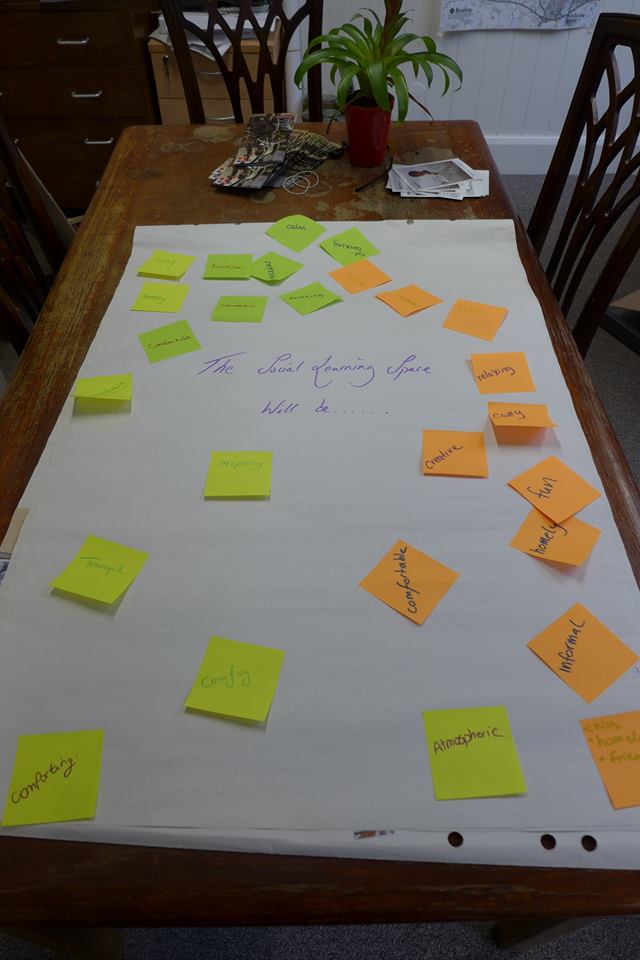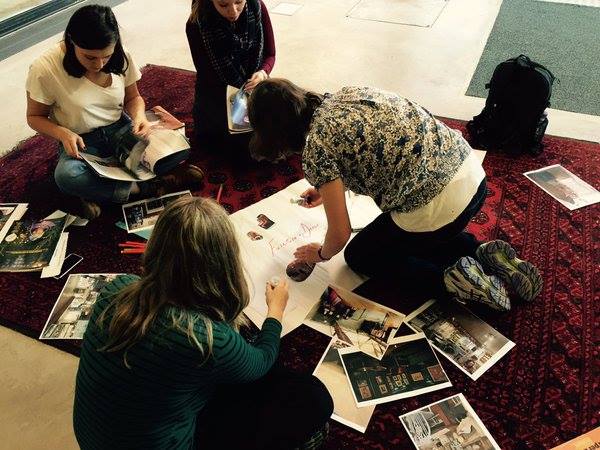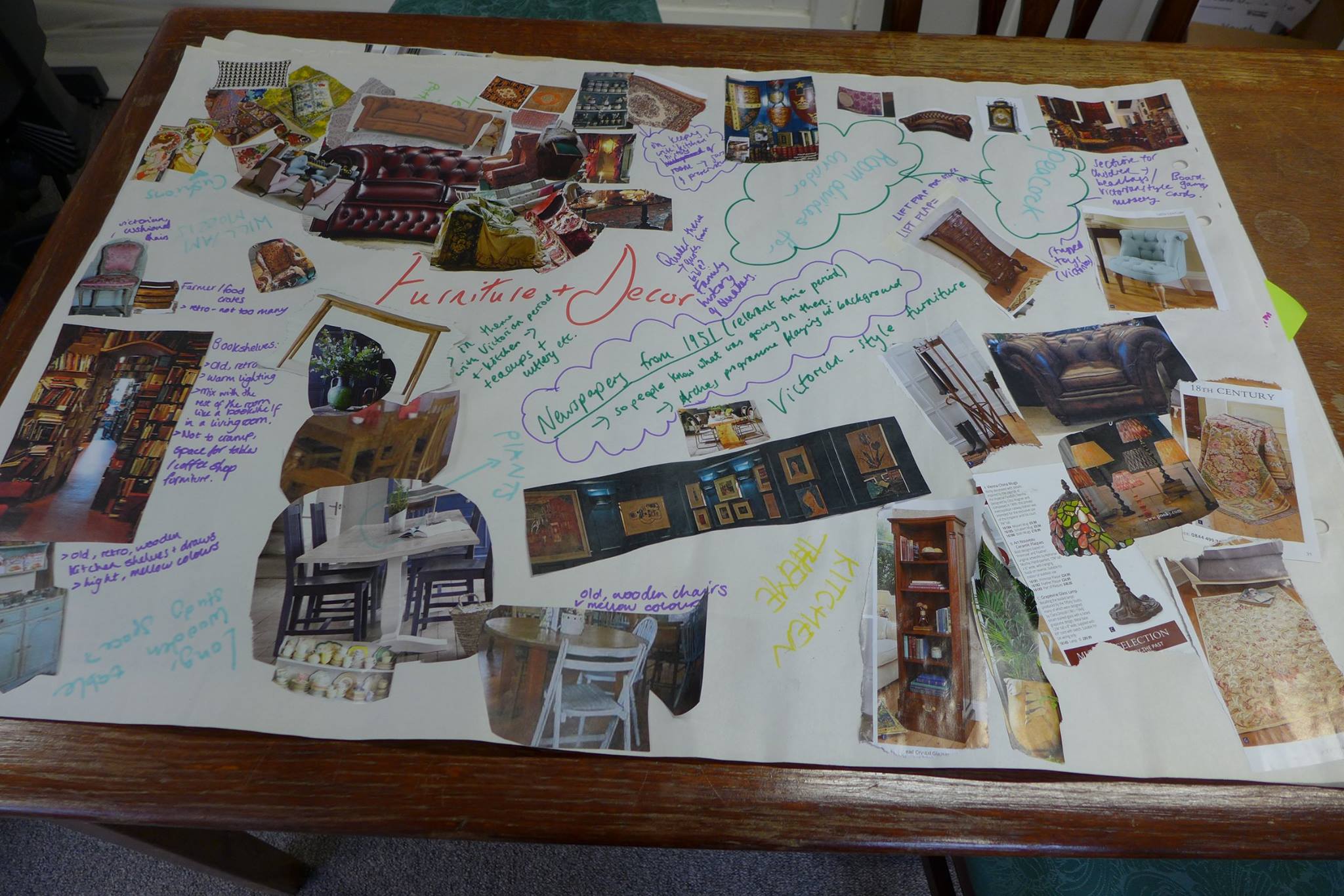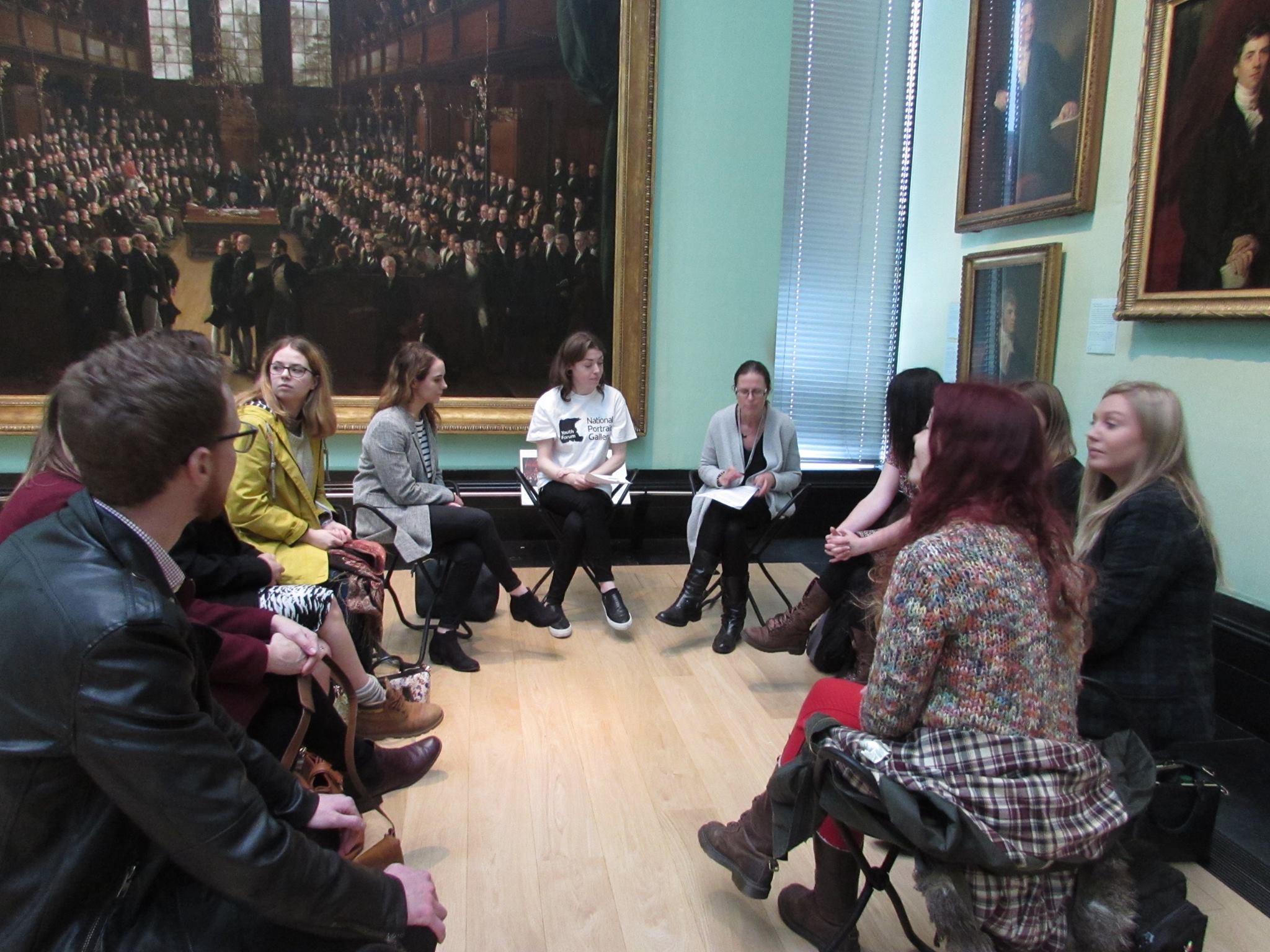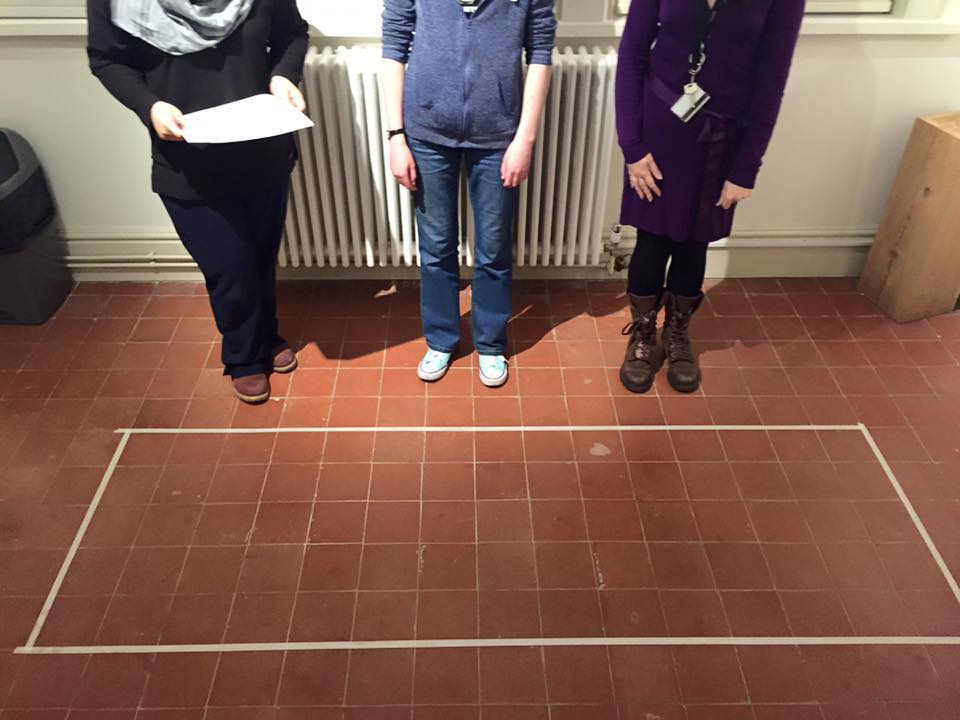Students take over!
This update from our Activity Plan team is written by Rachael Rogers, who has been a member of the MERL Student Panel since September. Over the last year, members have been advising us and getting involved in many aspects of the museum’s redevelopment. Rachael writes about the current project which the panel has been managing: the design of the museum’s ‘Social Learning Space’… somewhere for our visitors to relax in, reflect upon their visit and to discover more about our collections.
Since it was launched in 2013, MERL’s Student Panel has played a key role in the museum’s redevelopment plans, contributing to areas such as facilities, collections, accessibility and design, helping to bring new perspective to how the museum works and its accessibility to students and the wider public. So far this term, the panel’s discussions have been focused on our new Social Learning Space which will be located in the area in front of the reception foyer, and the adjacent room.
Our main incentive has been to make this an accessible area, somewhere people can relax, consider the museum’s collection, and, especially for students, work in a comfortable environment; all factors we considered in our 28th October session where we created mood boards, taking ideas from home and design magazines to build upon our own vision of the space we want to create.
We then took our ideas to London on 11th November, where we met with Penny Richards, founder director of Pringle Richards Sharratt, whose sister company GuM is heading MERL’s redevelopment design plans.
We took this opportunity to put forward our ideas regarding furniture and décor, access to the collections, and lighting, using our mood boards to emphasise the predominantly Victorian styles we had in mind, a style that we felt would help to incorporate the history of the house. From this we toyed with the idea of features inspired by room’s original purpose as a kitchen, or alternatively creating a Victorian study feel, using Victorian style shelving, brown leather sofas, and a Victorian wall, incorporating various paintings and posters to emphasise the breadth of the collection and provide another means of access for students and the wider public.
This meeting provided us with the opportunity to really consider the finer details of the space we want to create. Penny took our points on board, building upon our ideas and helping us to design an environment that will fulfil its role as a social learning space. This included considering factors such as its providing access to the collection and other resources through Wi-Fi and iPads, as well as its privacy. The second room acts as a thoroughfare to the Reading Room and the museum’s offices. For this reason is can be busy at times with people walking through, opening and closing doors. This was one of our main focus points in this meeting, with Penny suggesting a number of potential solutions to this issue such as the use of high back chairs or curtains, creating a divide and therefore privacy for those working in the room. Overall this meeting allowed us to clarify our plans and ideas, helping us to identify the various components of this aspect of the redevelopment, and providing us with a professional insight to ensure our social learning space fulfils its intended role.
While in London we also went to the National Portrait Gallery and met with Rachel Moss, who heads NPG’s Youth Forum, where we discussed the structure of their young person’s outreach, considering the roles their forum undertakes both in the museum and within the wider community. Many of their ventures aim to promote youth involvement, local pride, and creativity, with ongoing events including;
- ‘Pick Up a Pencil’, which runs every third Saturday of the month and hosts drop-in drawing sessions for 14-21 year olds
- BP Next Generation, an annual event, currently in its sixth year and which engages 14-19 year olds in portraiture
- Creative Connections: A four year project (2012-16) which aims to inspire and raise aspirations across four London boroughs.
- Youth Insights: Van Dyck and Portraiture. Part of Museum Takeover Day 2015, involving youth forum volunteers in a public presentation regarding the work of portrait artist Van Dyck.
Talking about NPG’s current ventures and future plans regarding expanding youth involvement and community outreach highlighted to us the ways that museums can be used, not only as a centre for learning and research, but also as a key figure within local communities, engaging a wide audience and creating greater accessibility into the heritage sector and, in the case of NPG, the artistic sector. One of the main things this meeting emphasised is how MERL’s redevelopment has the potential to expand beyond its collections and design. Through groups such as the student panel we hope to extend our outreach into local communities and areas slightly further afield, making the museum and its collections a more accessible facility and promoting awareness of the significance the heritage sector and the opportunities it can provide to all levels of the local community.
Since our trip to London, we have met again with Penny to discuss our ideas for the space and consider any developments. Overall, the main outcome of this meeting was that we would take more time to consider Penny’s ideas for the Social Learning Space, splitting ourselves three groups to focus on different areas of the development plans. Lisa, Clare, Siobhan, and Matthew have consulted with and presented their ideas to staff members in order to gain wider feedback. Chloe, Caroline, Aainaa, and Rhea have been considering the practicalities of the layout proposed by Penny, including the availability of kitchenalia and methods of obtaining these items. This has so far included considering public campaign ideas aimed towards the local Reading community.
Finally Phylicia, Imogen, Melina-Louise, Polly, Samuel, and myself have been considering power sources, including looking at both lighting and power outlets around the room, and the ways in which these facilities can be developed to suit the needs of those using the space. We’ll be meeting with Penny again soon to look at our developments and see how they can be incorporated into the design.

